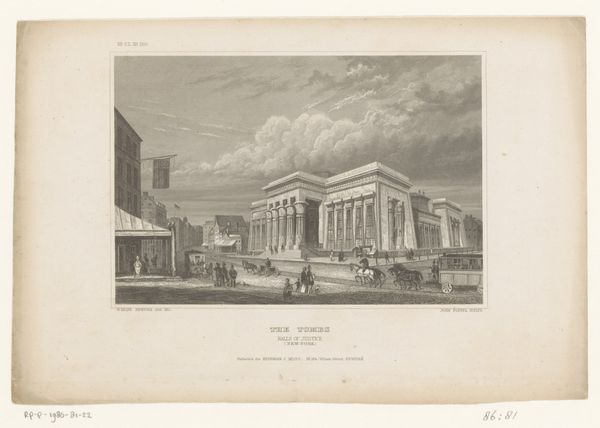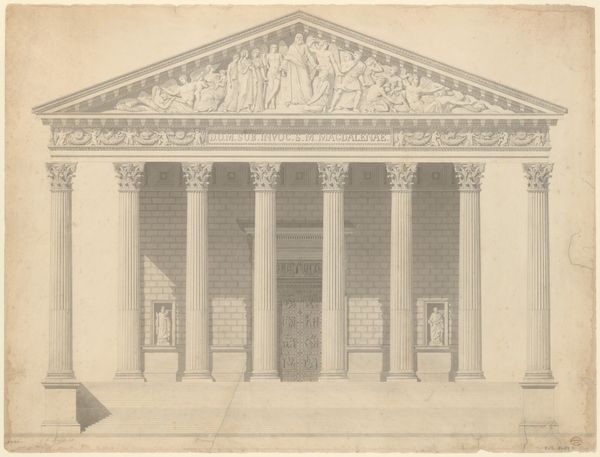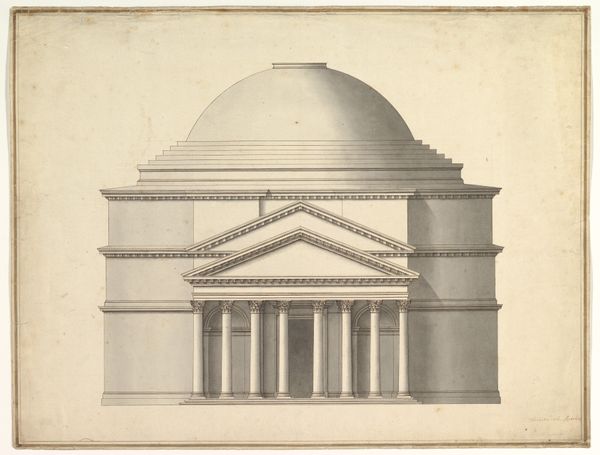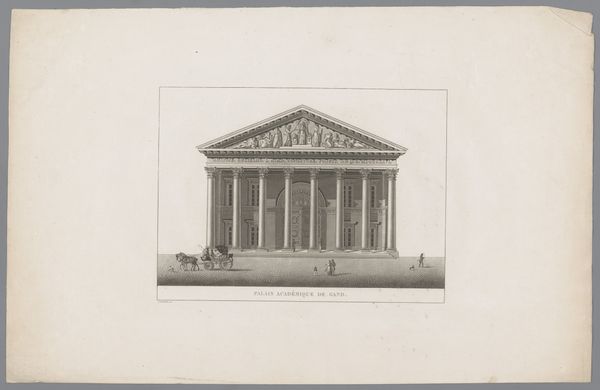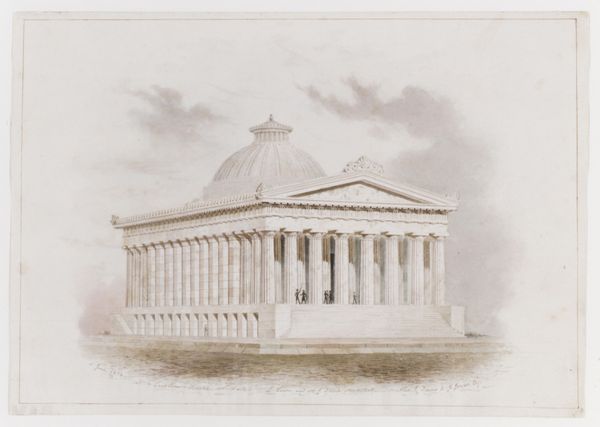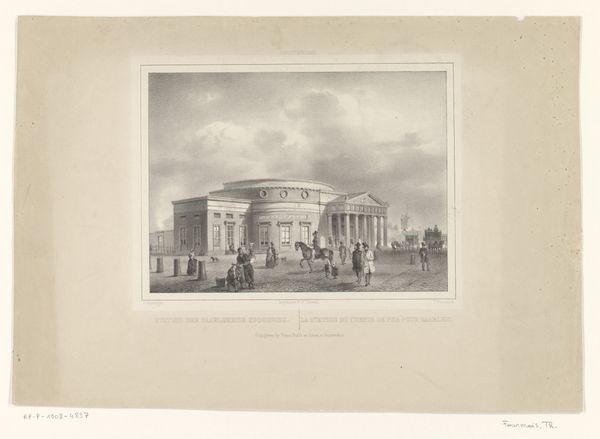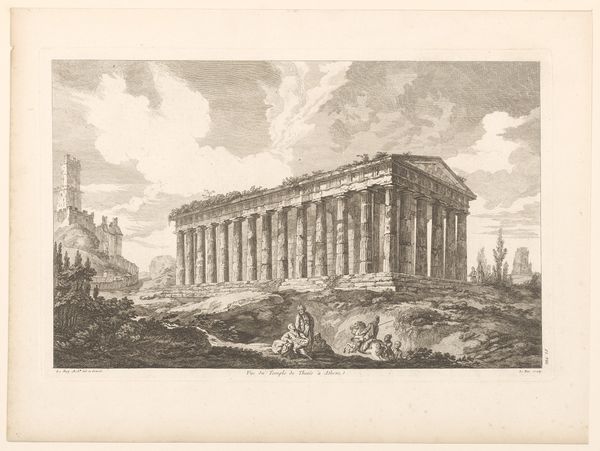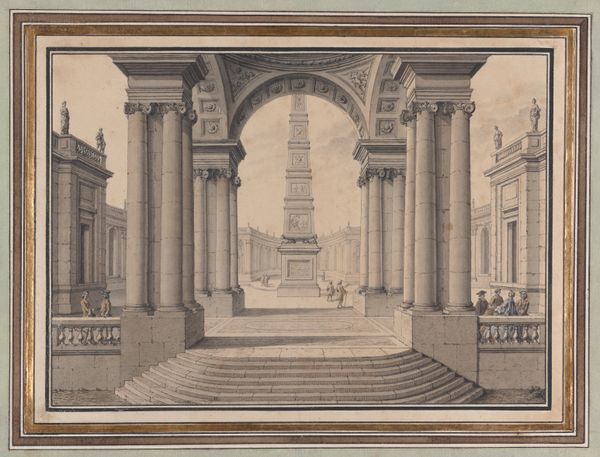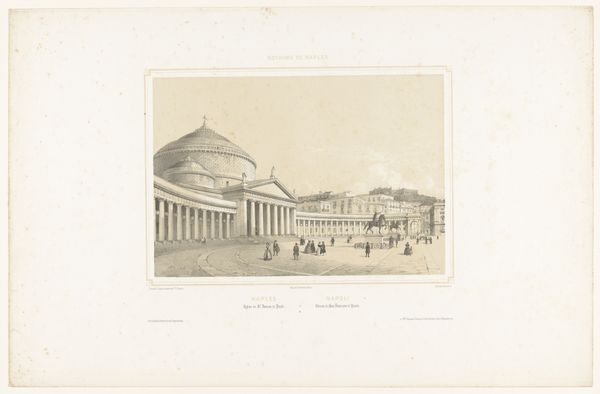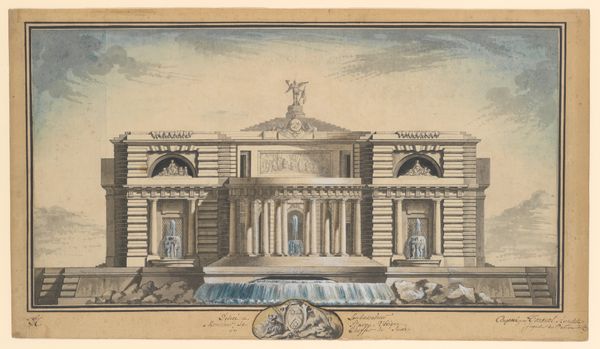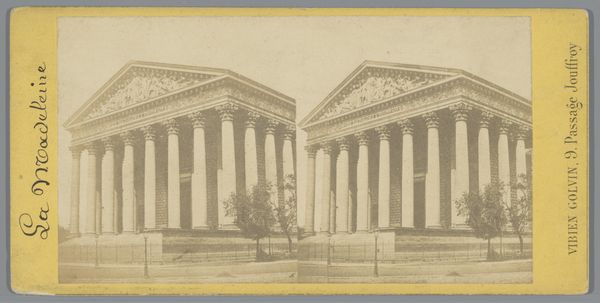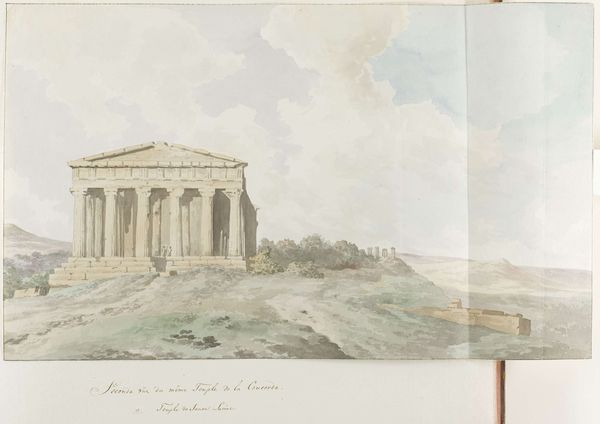
drawing, pencil, architecture
#
drawing
#
neoclacissism
#
landscape
#
coloured pencil
#
pencil
#
cityscape
#
architecture
Dimensions: image: 34.8 x 55 cm (13 11/16 x 21 5/8 in.) sheet: 37.2 x 57 cm (14 5/8 x 22 7/16 in.)
Copyright: National Gallery of Art: CC0 1.0
Editor: This is Louis Gustave Taraval’s “Hexagonal Temple in an Italianate Landscape,” a drawing from around 1780 rendered in pencil and colored pencil. It's fascinating how he uses geometry to create a very structured and idealized image. What are your initial thoughts? Curator: Well, first off, "idealized" is spot-on. Neoclassicism, which this drawing exemplifies, emerged during a time of significant social upheaval, specifically around ideas about civic duty and republican ideals. The emphasis on order and rational design— seen so clearly in the hexagonal shape, the symmetrical columns, and even the regimented figures in the frieze— reflects a desire for a more stable and 'perfect' social structure, right? Editor: Absolutely, I see that! The crisp lines and the almost sterile depiction of nature make the scene seem detached from reality. Curator: Exactly! And the choice of an Italianate landscape is deliberate. Italy, particularly ancient Rome, was held up as the epitome of republican virtue. The artist is using the past, or rather, an *idea* of the past, to comment on the present and perhaps even to propose a vision for the future. Who is invited into this seemingly utopian view and, perhaps more importantly, who isn’t? Notice the lack of any sign of labor or poverty? Editor: You're right, the figures seem to be from the same social class. So the “perfection” is excluding someone, a bias of its own? Curator: Precisely! This tension— between the promise of equality and the reality of exclusion— is something that continues to resonate today. Art isn't just about aesthetics, is it? It's a mirror reflecting our society, its aspirations, and its contradictions. Editor: I never thought of it that way, but it's true. Thank you! It's much more than a drawing of a temple. Curator: My pleasure! It makes me wonder, how can we, today, represent a truly inclusive “utopia” through art?
Comments
No comments
Be the first to comment and join the conversation on the ultimate creative platform.
